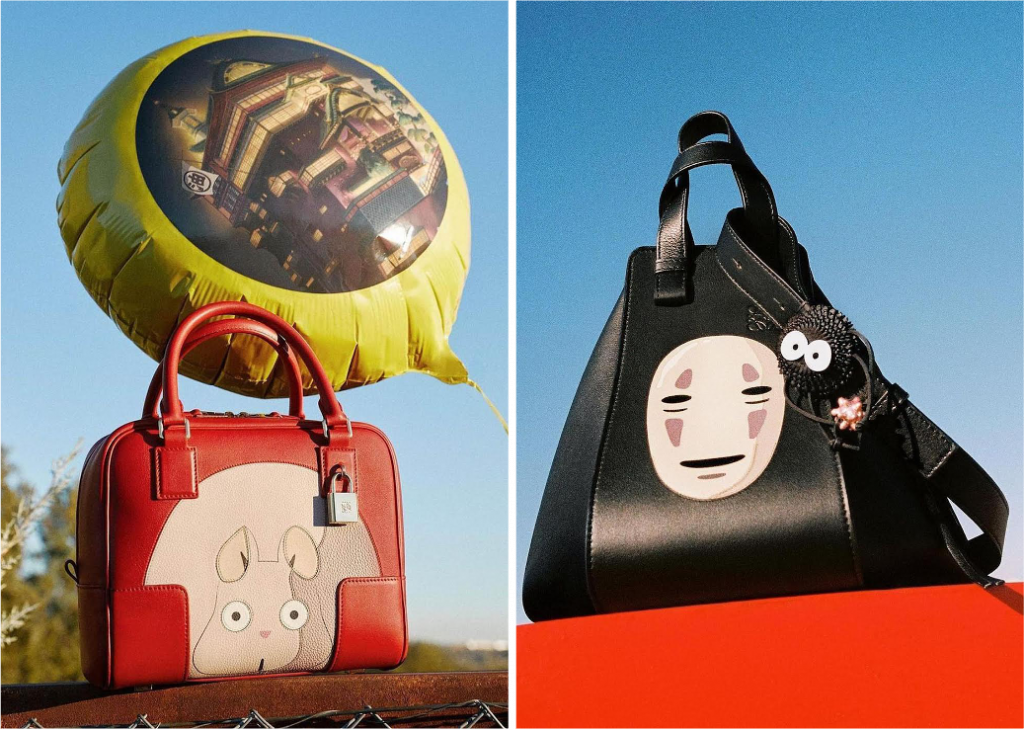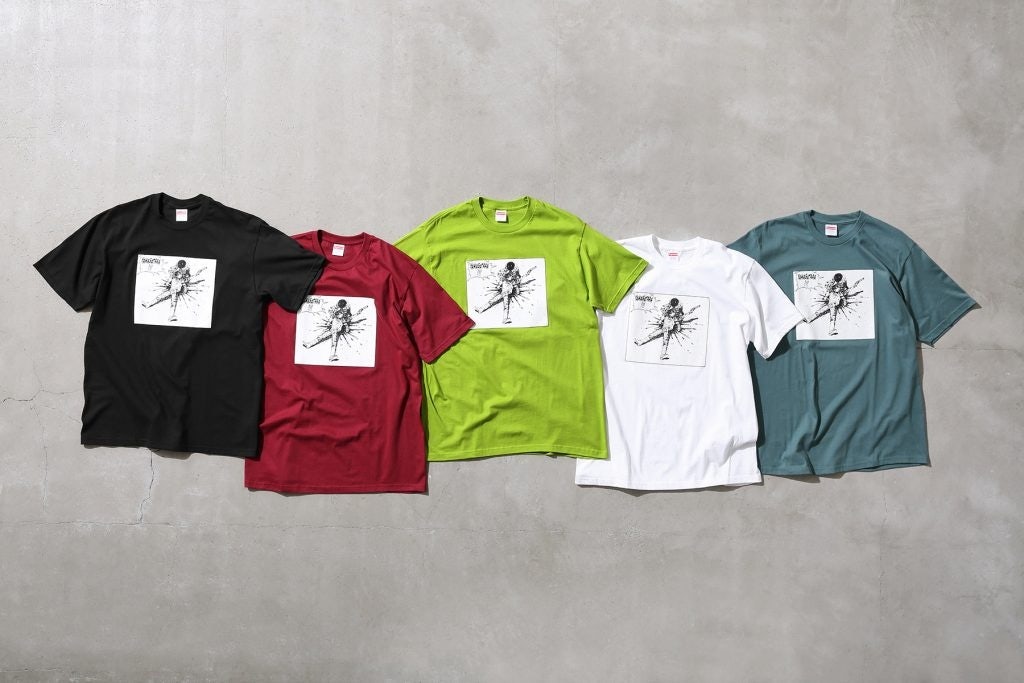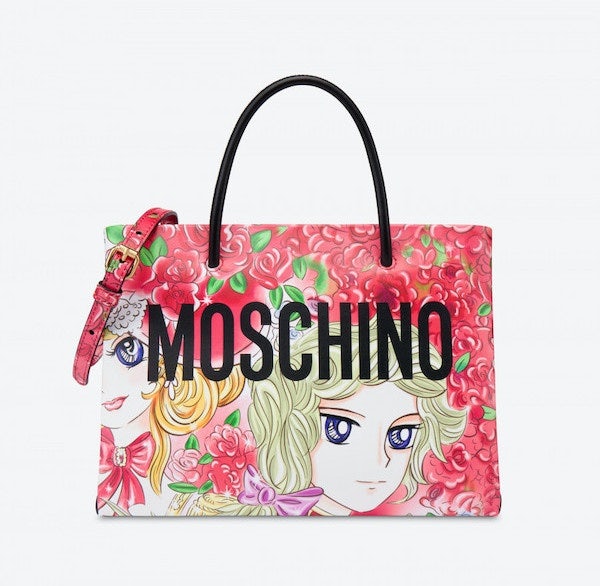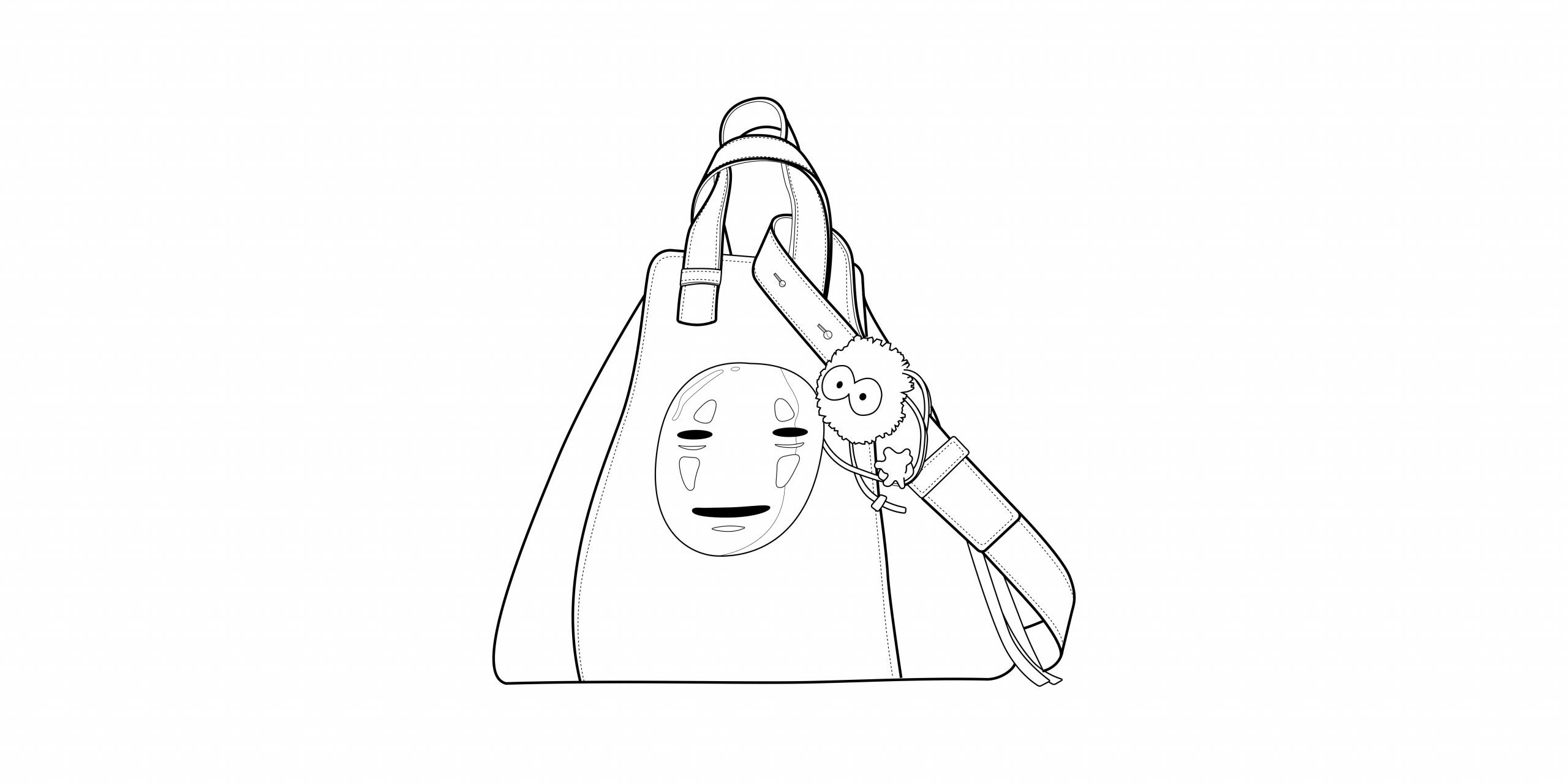In January 2022, Loewe launched a follow up to last year’s My Neighbor Totoro collection with another collaboration with Studio Ghibli, this time with accessories and apparel inspired by Spirited Away. As expected given the Totoro collection’s success, the Spirited Away line quickly sold out and appeared on resale websites for exorbitant prices. Only it wasn’t just the clothes and bags selling on the likes of Grailed; even special Spirited Away Loewe shopping bags appeared on eBay for hundreds of dollars.
Spirited Away is perhaps an unusual entity in the anime genre – the film won the Academy Award for Best Animated Feature in 2003, giving it a mainstream, global relevance rarely seen in other anime works. But it is just the tip of the iceberg of the immense anime fandom, which has gained more and more recognition in the West thanks in no small part to the introduction of anime series on streaming platforms and overall greater availability of anime and manga titles in English.

And Loewe’s Studio Ghibli partnership is far from unique in the luxury fashion sphere: fellow European luxury labels like Gucci, Moschino and Louis Vuitton have in recent years woken up to the strong cultural appeal of anime and manga collaborations. According to shopping app LYST, following the announcement of the second Loewe x Ghibli collection, searches for Loewe jumped 23 percent in 24 hours, while year-on-year usage of terms such as “anime” and “manga” have increased 60 percent.
Though no longer a cult or “niche” fandom, anime and manga properties still add an unexpected twist to traditional luxury products, showing those brands’ interest in engaging with an evolving pop culture landscape. The inclusion of a beloved Ghibli character like Totoro can help those brands elevate a simple bag into a modern collectible. There’s an only growing fanbase ready to snap up not just a co-branded sweatshirt but even a paper shopping bag emblazoned with their favorite character.
Anime Exports#
In the Western context, anime and manga have only just begun to break out of their subculture status, driven by the arrival of shows like Death Note on Netflix or live-action adaptations of beloved series like Cowboy Bebop. But as Tiffany Hsu, Mytheresa Vice President Womenswear & Kidswear Fashion Buying, notes, the fandom has persisted for decades as a mainstream part of culture in Japan and other parts of Asia.
“It has only been seen as niche in European and U.S. countries. However over the past 10 years many mangas and animes have been translated into different languages so they are not really considered niche anymore,” she says. Hsu adds that sites like Crunchyroll, an American distributor for anime founded in 2006, and anime’s connection to the gaming industry have helped anime and manga culture gain traction in the English-speaking world.

But the availability of anime is not simply growing larger in the West, the way it is depicted in Western media is changing. “There have been several waves of more or less limited youth marketing success since the 1960s, particularly in America with Astro Boy and Star Blazers, and English-dubbed versions of Japanese hits, and toy tie-ins and licensing, most notably Transformers and Shogun Warriors,” says Helen McCarthy, author of numerous books on anime and manga such as A Brief History Of Manga and 500 Essential Anime Movies. “But these were purely youth oriented and had most of their Japanese origins and inspirations disguised or removed to fit Western cultural perceptions of the day.”
Rather than simply equating cartoons with children’s media, the manga and anime titles now available to a Western audience showcase how the genre speaks to adult audiences. “Many adults have only seen [Studio Ghibli’s] animes as adults as they have only recently been put on Netflix in Europe and U.S. and the story lines are deeper and more meaningful than on regular children‘s television shows,” Hsu says. And it’s not just Ghibli films like Princess Mononoke, which offers a sharp critique of human greed, but also anime series like Fullmetal Alchemist: Brotherhood, available to the U.S. in 2010, which tackles themes of loss and grief. The accessibility of anime and manga and increased understanding of them as sophisticated mediums in a Western context makes them a suitable – and potentially lucrative – partner for luxury brands looking to appeal to a culturally savvy audience.
An Appeal to Diverse Audiences#
Luxury labels like Gucci and Loewe are far from the first to see anime’s potential as a fashion collaborator. In 2017, BAPE teamed up with One Piece and Supreme launched an Akira collaboration following months of speculation, while adidas launched a Dragon Ball Z line of sneakers in 2018. Luxury is now catching up to how those brands have created a loyal and engaged fanbase through such partnerships. “Those brands that are already creating collections with those cultural shifts in mind, have understood that the future of fashion is deeply rooted in entertainment, collaboration, community and emotion,” says Bridget Mills-Powell, content director for LYST.
“Those brands that are already creating collections with those cultural shifts in mind, have understood that the future of fashion is deeply rooted in entertainment, collaboration, community and emotion."
Unlike luxury brands, the likes of Supreme and adidas have long since made an appeal to diverse audiences and created value by engaging with pop culture entities. The interest in anime speaks to an understanding from luxury brands, which have developed much of their cache with an exclusionary, white-centric model, that the modern consumer is interested in more diverse sources of culture. “I think English-speaking mass audiences have become more open to non-Caucasian visual influences in the past decade,” says McCarthy, citing the growing global popularity of K-pop and a mandate for Black and Asian actors and directors in mainstream cinema, such as superhero films. “Manga and anime tie in to that zeitgeist.”
The Real Thing#
Luxury doesn't need to always collaborate with an established franchise to capture the appeal of anime and manga styles. Under Virgil Abloh’s direction, Louis Vuitton collaborated with artist ReggieKnow on a short animated film to promote the brand’s Spring/Summer 2021 menswear collection. His work has long since combined anime influences with hip-hop styles, and drawn admiration from the likes of Abloh and Kanye West.
But there is inspiration and there is copying. Manga fans were particularly incensed to see Moschino creative director Jeremy Scott stage a “Anime Antoinette” collection for the Fall/Winter 2020 runway show, with what appeared to be extremely similar characters and styles to those from the manga series The Rose of Versailles without any official acknowledgment or collaboration.

“The idea that a Western brand would illegally appropriate a Japanese creator's imagination is very offensive to fans because it intersects with so many issues,” says McCarthy. “There's white imperialism and colonialism, a very sensitive area as some fans come from minority communities, have ancestors who've been oppressed, or have friends in those communities.” Fans expressed dismay at seeing the work of Ikeda Riyoko, who created The Rose of Versailles, so blatantly copied. “[She] is one of the most beloved senior female manga creators – so there's an element of sexism and ageism there too,” McCarthy adds.
Though originally published in 1972, Rose of Versailles was not published in English until 2019, making it perhaps less recognizable to Western audiences than other anime and manga series. But the growth of anime and manga in mainstream Western culture, and its growing recognizability in luxury spheres, means brands will need to display particular care when working with beloved characters and series. The brands that do so correctly can capture the nostalgia and fandom surrounding popular anime series, those that don’t may only alienate potential audiences. “Fans tend to be very loyal to their preferred creators, and the idea that a major brand is not showing sufficient respect or treating them fairly can be a strong negative factor,” McCarthy says.

